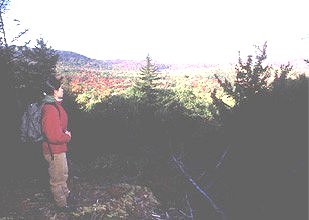|
Much of the UK used to be wooded. Place names
like the Forests of Dean, Sherwood and Bowland bear witness
to past vegetation. Most of these trees were chopped down
to build ships. These ships were used to explore for other
plants - spices, plantation crops and garden plants, that
could be exploited by british colonialists. They also brought
back wood like mahogany and walnut for furniture. Is is any
wonder that wood is treated so casually? Over many centuries
there has been a gradual loss of forest cover.

|
At the start of
this century, it fell to its lowest level of 5 per cent of the UK's area. There
was an over dependence on imported timber which after the first world war initiated
a UK forest expansion programme. Forests cover 10 per cent of the UK land area
today. This is significantly less than the 25 per cent average for the EU. Most
of these new forests are on land of low agricultural quality in the remoter upland
areas of the UK.
Non-native coniferous species have generally been favoured because of their high
productivity. There are many concerns about the impact on the landscape and on
the ecology of semi-natural habitats. There is now a greater emphasis on securing
multiple benefits by planting "down the hill" on better quality land and increasing
the amount of broadleaved planting and new native woodlands.
|


